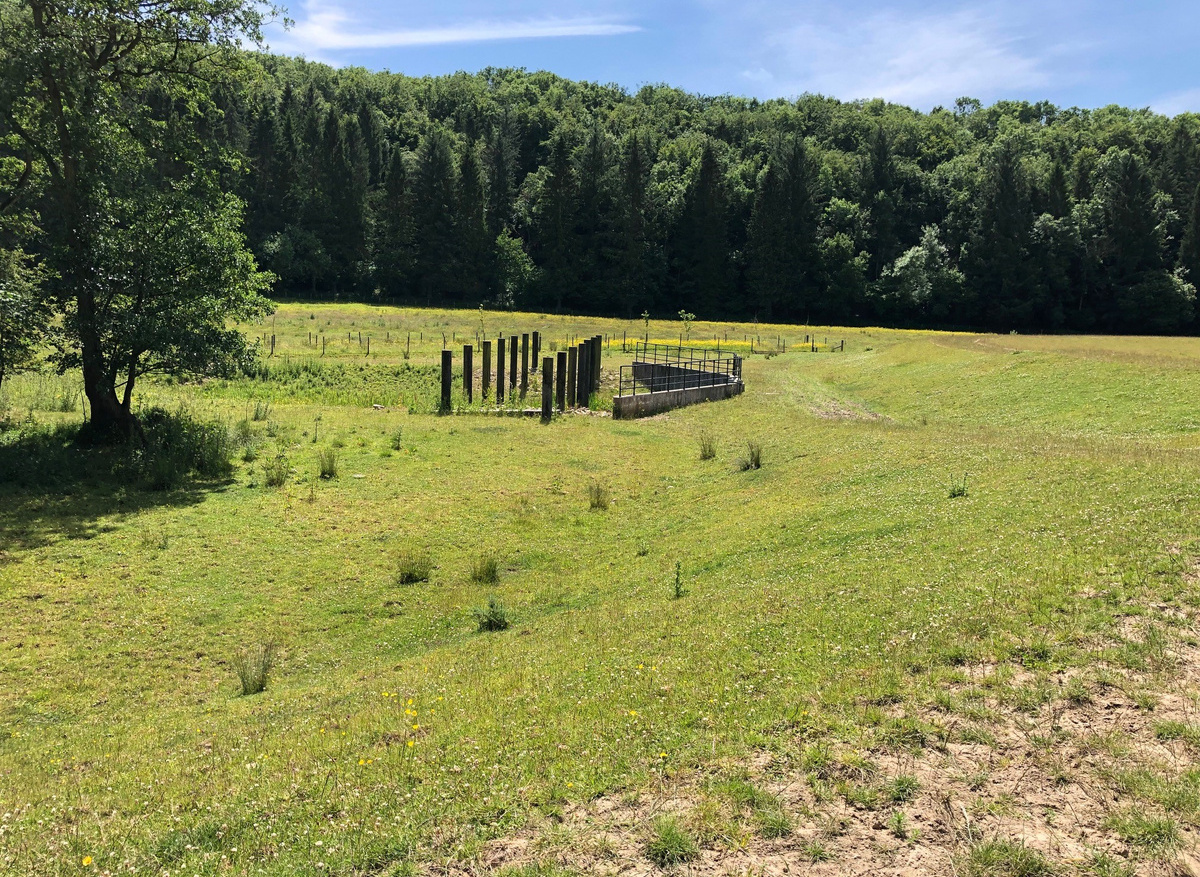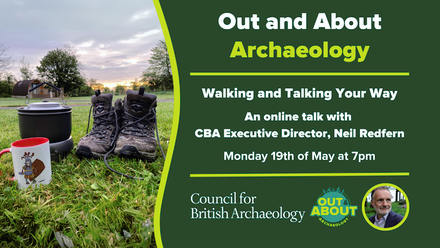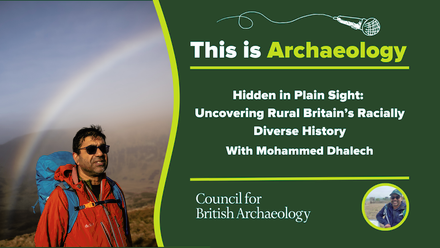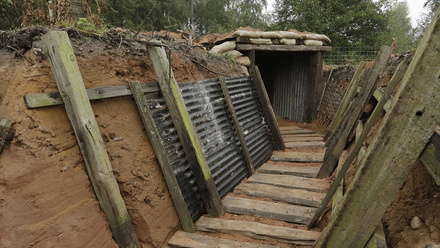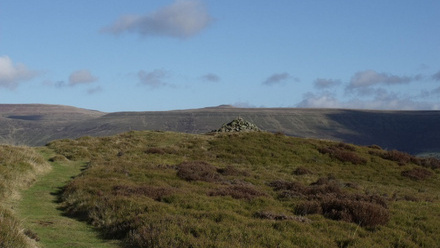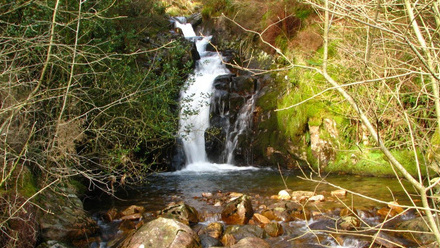There is only one environment, it’s natural and cultural, and it has its own history to tell. We may see this environment and read it through our own prisms, and most likely communicate its significances differently - mine is to see the environment through its history and so its evolution, and in turn looking to its future in supporting the wellbeing of communities.
In my work I see an environment through a recent past enriched with a mix of cultures and reflected in changing lifestyles and the artefacts that these changes leave behind. Shifts in attitudes on waste will have an immense impact on the archaeological record of the future as items are recycled and repurposed. The digital age continues to replace paper archives and still older forms of communication. Our economies have been driven by people and animals, wind and water, and the likes of coal, gas and nuclear. We are shifting again, and in doing so adapting and creating redundant structures which become our archaeology and our memories now written in the landscape for future generations.
In my role I also experience our environment through lenses in to deeper pasts. Pasts which include long term cultural and environmental trends. Whether recent or deep, through Archaeology and History we can see and record the vulnerability of past communities and the adaptations other people have made to bring us to this point in time. Archaeology, History and Cultural Anthropology, provide us with the tools to map human decision making and ‘progress’.
So here I am at Pickering where shortly I and my colleagues will be meeting archaeologists, landscape architects and natural environment managers from the Environment Agency, Historic England and the National Trust. Pickering has a long history of flooding with the most recent serious event occurring in 2007 causing £7 million of damages to homes and businesses. I worked here 10 years ago when we were building a flood alleviation scheme and alongside landowners and the Forestry Commission to developing new land management practices. These practices included the introduction of large woody dams, timber bunds, blocking moorland drains and planting floodplain woodland with the aim being to “slow the flow” to reduce peak flow in the Pickering Beck to manageable levels. This would help maintain the Becks capacity to disperse flood water and so reduce flood risk to people, properties, and businesses in the town. We will be hearing about what has been accomplished with these natural, historic, land management practices, and their successes in protecting our communities, their places and the stories of their connected past.
What I find interesting as an archaeologist is how our engineered landscapes are naturalising into the environment, creating in time a new layer of natural and cultural heritage, a legacy for the community of Pickering which will continue to silently protect the town in the decades to come. I wonder how future archaeologists will in time interpret our intervention into Pickering’s landscape?
In the past our assessments would have focussed on the direct physical impacts of our landscape change on the archaeology and character of a site and so identify what needs to be “protected” and “rescued”. More recently our thinking has additionally been about the contributions the historic environment continues to provide to our communities. Pickering is a good example with its flourishing tourist economy which includes many heritage sites. There being about 30 Listed Buildings of “special interest” in Pickering at risk of flooding, including Beck Isle Museum which contains over 60,000 artefacts representing the rich history of the area. There is a Roman Villa and bathhouse nearby, the site of Pickering’s medieval castle, and a more recent history with the North Yorkshire Moors steam railway and its 1930s themed Pickering Railway Station. Opened in 1836, today the railway is the most popular heritage railway in the country carrying over 300,000 passengers in a year, with both tourists and locals benefiting.
There is a growing recognition of the need for us to account for and protect the variety of important benefits the historic environment provides to our communities (such as research and learning, recreation, employment, and health and wellbeing) and that when our heritage is valued for these ‘services’ it can in turn lead to investment which sustains our heritage.
However, sustaining a place is not only about "use” and “culture” keeping the past relevant to our current lives. Our projects recognise there is also an important conversation to be had about climate, environmental change, and the need for adaption in a time of climate emergency if we are to sustain the environments we live, learn and play in.
I believe an understanding of the historic environment has an important role to play in these conversations, informing design by identifying the impacts of past decisions and indeed how our communities dealt with extreme events. In developing this understanding we can then work with engineers, designers, land managers and communities to realise a more sustainable future for the environment. In doing so identifying a future which accounts for climate projections and community requirements. There is a role here for the broadest of historic environment communities and all environmentalists.
The question we are facing now with you is “How do we agree what we should keep and what we should let go?” As individuals and communities, people have been making such decisions for centuries if not millennia, always with one eye on future generations. What might be new is our perspective on managing the impacts of climate and environmental change. If we consider our rural historic character to be important in a catchment such as Pickering Beck we need to act now, planting drought and disease tolerant species relevant to the next century; trees and vegetation that might also need to be resistant to the effects of flooding and high winds. I wonder what our “native” planting catalogue for the 22nd Century should include and what change this will have upon an areas historic character and whether our appreciation can be retained. What of the archaeology, and the built environment which might be eroded by drought, extreme rainfall events and subsequent flooding? We need to be acting now, planting now, to manage the significances of our places if we are to maintain the benefits, the Services, that the environment provides to our communities.
We know if we act, and act now, our futures of subsequent generations can be positive. We understand the goal to limit global warning to 1.5 degrees Celsius compared to pre-industrial levels is still within our reach. The Environment Agency is leading the way in pledging to be carbon neutral by 2030 and is intent on leaving a legacy where the environment is in a better condition than the one we inherited. In doing so we will create resilient places which support the wellbeing of our communities.
I remain of the opinion that there is only one environment. One which includes nature, culture and heritage. Change is part of its story. It is a change studied and communicated by archaeologists, historians and museum curators and preserved in and by communities. Help us recognise the contribution of earlier generations to our environment and support its continuation. Hold on to what you believe to be meaningful during a period of change, like our predecessors have. Tell archaeologists and historians what is important to you and your communities and help us design a sustainable future for people and wildlife; one I hope which includes the contribution natural and cultural Heritage in your vision.
Foremost I am an environmentalist, maybe one looking backwards and forwards in time, with the intent of playing my part in leaving the environment in a better condition than the one I came in to.
Stephen Kemp. Principal Archaeologist. Environment Agency supporting our project teams to make well informed decisions that support a sustainable natural and cultural heritage resource and climate resilient environment, whilst protecting lives and properties from flooding.
This blog represents my personal views.
Contact details
Stephen Kemp
Environment Agency

